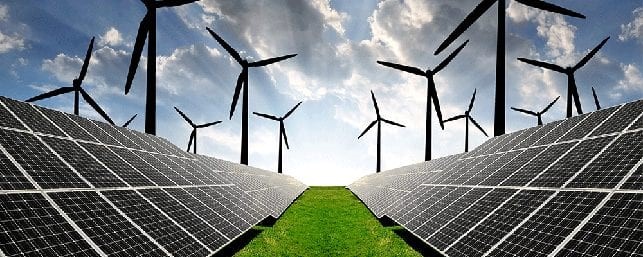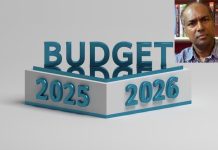Amongst the Renewable Energy sources (WIND, SOLAR, HYDRO, BIO, GEOTHERMAL) which have progressed fastest in 2019 had been wind energy, including a considerable increase in offshore wind farms.
Wind power is a marvelous form of renewable energy. Windmills have been used for thousands of years to thrash grain, pump water for agriculture, drain land. Now for electricity generation: a wind turbine works in the reverse way to a fan. Fans use electricity to create wind; wind turbines use wind to make electricity! Their only inherent negative factor is the inconstancy of wind-speed. In Mauritius, the monthly mean wind speed was highest during winter months of July to September, best for stronger winds speeds. An average wind speed, measure at Plaisance, gave a maximum of about 5.4 m/s in July and a minimum of 3.9 m/s in May.
The Global Wind Energy Council (GWEC) published it’s a Global Offshore Wind Report 2020, which gives an overview of the wind sector, with an analysis of market demands and industry forecasts up to 2030. Expected is a considerable increase in job creation (up to 900,000 jobs will be created in the industry over the next decade) as technology costs of wind generation equipment decline and their efficiency increases.

Key Findings of the Report:
- ‘With 6.1 GW of new capacity added, 2019 was the best year in history for the global offshore wind industry and 6.6 GW is expected to be installed in 2020 despite the impacts of the COVID-19 crisis.
- Offshore wind is being seen as a major contributor to post-COVID economic recovery by governments around the world.
- Europe continues to be the leading region for installations, but the market is taking off in the Asia-Pacific region, with China as the global leader, as well as Taiwan, Vietnam, Japan and South Korea.
- GWEC Market Intelligence forecasts that through 2030, more than 205 GW of new offshore wind capacity will be added globally – a 15 GW increase.
- Floating offshore wind will reach full commercialisation by 2030 with at least 6 GW installed globally.
- Generation of energy from wind (and sun) has been less impacted by the pandemic compared to other energy sectors, demonstrating its viability to be a key driver for a global green recovery.’
Years ago I witnessed the working of the first pumped hydropower in Wales. Dr K. Elahee proposed “pumped hydropower as a possible solution to the problem of peak electricity demand in Mauritius. This will reduce the need for investing in fossil-fuel-based power generation. However, its capital investment can be high”. This system works best with solar power. Water is pumped from a low-level lake or reservoir to a higher-level lake during the day using surplus solar energy. And at night (no sun) the water runs back to the lower lake, turning turbines, ensuring more or less 24 hour supply of electricity. Same can apply to electricity produced from wind energy, to compensate for variation in wind speeds.
Mauritius must achieve at least a twofold increase in solar and wind energy production every five years in order to attain its renewable energy development objectives.
Dr Michael ATCHIA



![[Khutbah – La réflexion du Vendredi] Gaza : Le piège de l’oubli ou la stratégie de la diversion](https://sundaytimesmauritius.com/wp-content/uploads/2025/06/gaza-netzarim-corridor-humanitaire-218x150.jpg)



![[Yoga] A shared legacy, a shared future](https://sundaytimesmauritius.com/wp-content/uploads/2025/06/Yoga-Article-HC-218x150.jpg)
![[Khutbah – La Réflexion du Vendredi] Tawakkul, la confiance absolue en Allah (swt)](https://sundaytimesmauritius.com/wp-content/uploads/2025/06/Tawakkul-218x150.jpg)
![[Conseillers du MSM] Cumul de postes sur les boards : Un système lucratif d’enrichissement personnel](https://sundaytimesmauritius.com/wp-content/uploads/2025/06/pic-2-150x150.jpg)
![[National Agency for Drug Control] Sam Lauthan : « C’est tous ensemble qu’on vaincra la mafia »](https://sundaytimesmauritius.com/wp-content/uploads/2025/06/WhatsApp-Image-2023-02-16-at-4.22.48-PM-e1738665704593-150x150.jpeg)
![[OMCA Foundation] Un dîner de gala pour soutenir l’accès aux soins des plus démunis](https://sundaytimesmauritius.com/wp-content/uploads/2025/06/f960dc68-ed3e-4619-ae8e-dd8f374d07c4-150x150.jpg)

![[Conseillers du MSM] Cumul de postes sur les boards : Un système lucratif d’enrichissement personnel](https://sundaytimesmauritius.com/wp-content/uploads/2025/06/pic-2-100x70.jpg)
![[National Agency for Drug Control] Sam Lauthan : « C’est tous ensemble qu’on vaincra la mafia »](https://sundaytimesmauritius.com/wp-content/uploads/2025/06/WhatsApp-Image-2023-02-16-at-4.22.48-PM-e1738665704593-100x70.jpeg)
![[OMCA Foundation] Un dîner de gala pour soutenir l’accès aux soins des plus démunis](https://sundaytimesmauritius.com/wp-content/uploads/2025/06/f960dc68-ed3e-4619-ae8e-dd8f374d07c4-100x70.jpg)